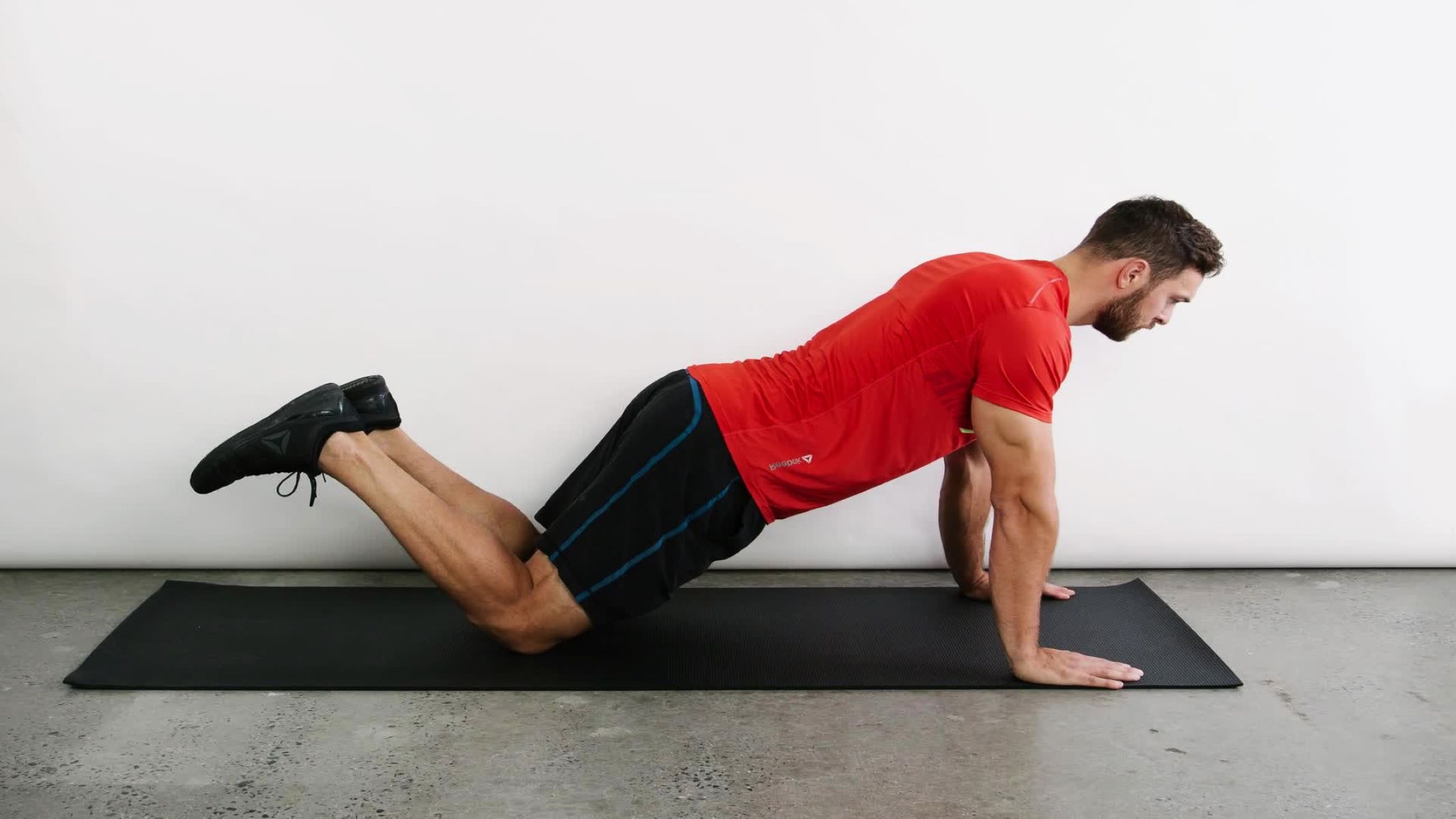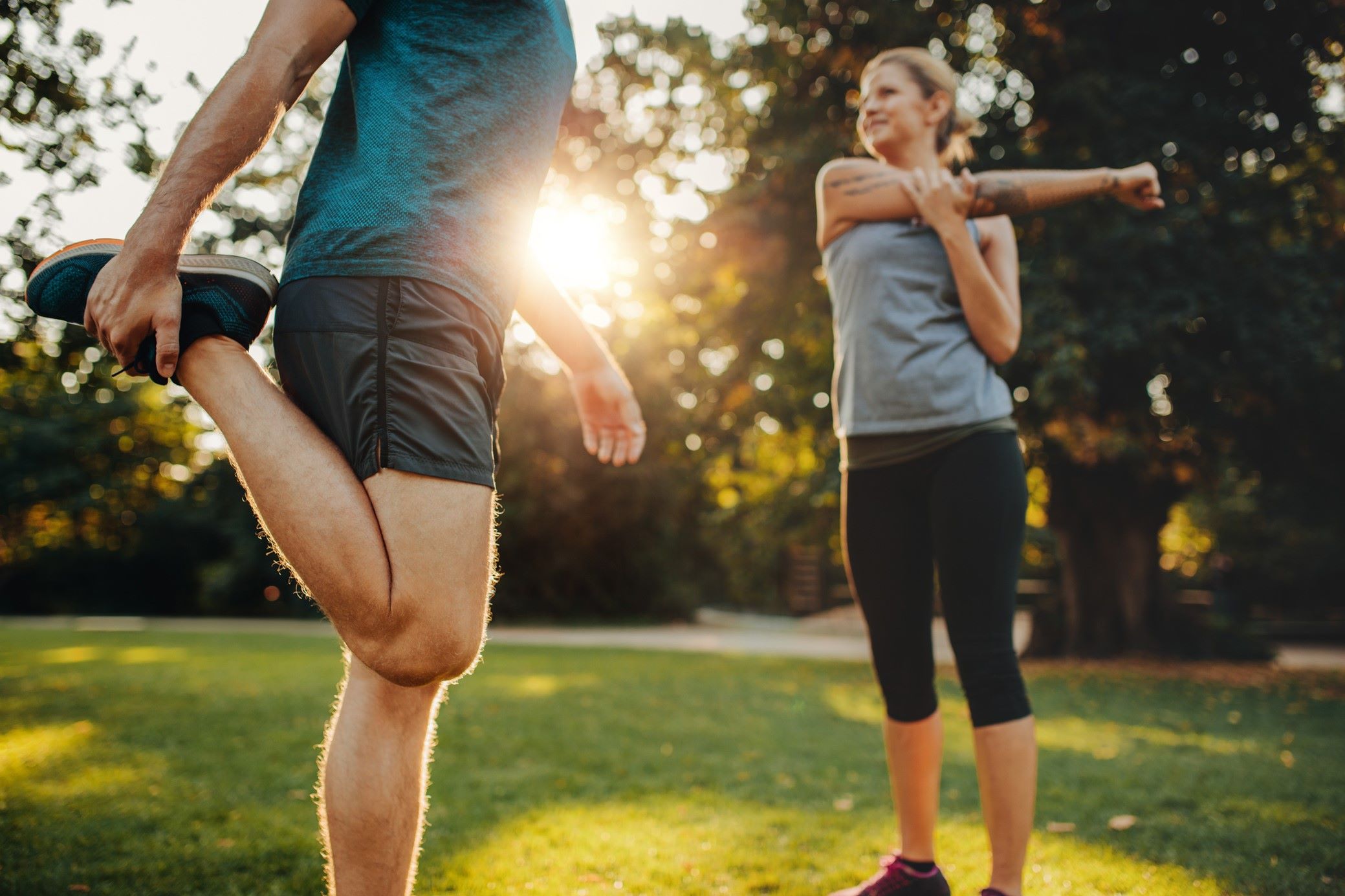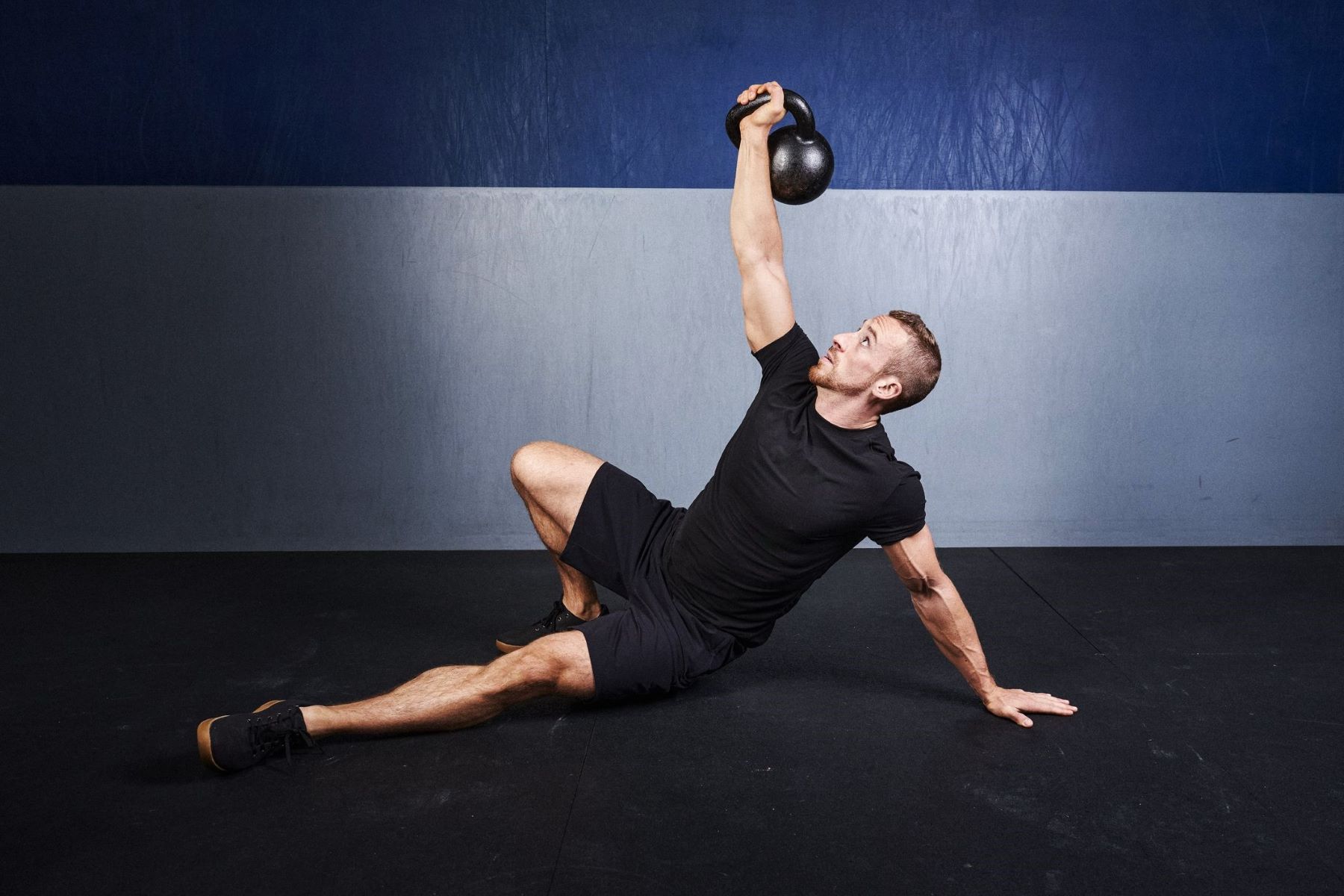Home>Training & Techniques>The Importance And Techniques Of Running Warm-Up


Training & Techniques
The Importance And Techniques Of Running Warm-Up
Published: March 3, 2024
Learn the importance of a proper warm-up and effective techniques for training and techniques. Enhance your performance and prevent injuries with these essential tips.
(Many of the links in this article redirect to a specific reviewed product. Your purchase of these products through affiliate links helps to generate commission for Therunningadvisor.com, at no extra cost. Learn more)
Table of Contents
The Benefits of a Proper Running Warm-Up
A proper running warm-up is not just a formality; it is a crucial component of any running routine. It serves as a preparatory phase that offers numerous benefits to the body and mind, ultimately enhancing the overall running experience. Here are the key advantages of incorporating a thorough warm-up into your running regimen:
-
Injury Prevention: Engaging in a comprehensive warm-up routine helps to reduce the risk of injuries during running. By gradually increasing blood flow to the muscles and elevating body temperature, the warm-up primes the body for the physical demands of running, making it less susceptible to strains and sprains.
-
Improved Flexibility: Dynamic stretching and mobility exercises performed during the warm-up phase enhance the flexibility of muscles and joints. This increased flexibility allows for a wider range of motion, enabling more efficient and fluid running strides.
-
Enhanced Performance: A well-executed warm-up primes the cardiovascular system, increasing heart rate and blood flow to the muscles. This, in turn, improves oxygen delivery and nutrient supply to the working muscles, enhancing overall performance during the run.
-
Mental Preparation: Beyond the physical benefits, a warm-up also plays a crucial role in mental preparation. It provides an opportunity to focus the mind, visualize the upcoming run, and mentally prepare for the physical exertion ahead. This mental readiness can significantly impact running performance and endurance.
-
Activation of Muscles: Activation exercises incorporated into the warm-up routine help to awaken and engage specific muscle groups that are essential for running. This activation primes the muscles for the demands of running, ensuring optimal recruitment and function during the workout.
-
Gradual Intensity Build-Up: A proper warm-up allows for a gradual increase in exercise intensity, providing a smooth transition from rest to activity. This gradual progression prepares the body for the higher intensity of the run, reducing the likelihood of sudden stress on unprepared muscles and cardiovascular system.
In summary, a proper running warm-up offers a multitude of benefits, including injury prevention, improved flexibility, enhanced performance, mental preparation, muscle activation, and gradual intensity build-up. By incorporating a thorough warm-up routine into your running regimen, you can optimize your overall running experience and set the stage for a successful and enjoyable workout.
Dynamic Stretching for Running Warm-Up
Dynamic stretching is a fundamental component of a comprehensive running warm-up routine. Unlike static stretching, which involves holding a stationary position for a prolonged period, dynamic stretching involves continuous movement through a full range of motion. This type of stretching is particularly beneficial for runners as it not only helps to improve flexibility but also primes the muscles and joints for the dynamic movements involved in running.
One of the key advantages of dynamic stretching is its ability to increase blood flow and circulation to the muscles, which is essential for optimal performance during running. By engaging in dynamic stretching exercises, runners can enhance the elasticity of their muscles and improve their overall range of motion. This, in turn, allows for more efficient and fluid movement while running, reducing the risk of muscle strain and injury.
Incorporating dynamic stretching into the running warm-up routine also serves to activate and engage the muscles that will be utilized during the run. This activation primes the muscles for the specific movements and demands of running, ensuring that they are prepared to perform optimally. Additionally, dynamic stretching can help to improve neuromuscular coordination, enhancing the communication between the nervous system and the muscles, which is crucial for efficient and coordinated movement while running.
When selecting dynamic stretching exercises for a running warm-up, it is important to focus on movements that mimic the actions and range of motion involved in running. This may include exercises such as leg swings, walking lunges, high knees, butt kicks, and leg circles. These dynamic movements not only help to increase muscle temperature and flexibility but also serve to mentally prepare the runner for the upcoming workout.
Furthermore, dynamic stretching can be tailored to address specific areas of tightness or weakness in the individual runner. By incorporating targeted dynamic stretches, runners can address imbalances and limitations in their flexibility, ultimately improving their overall running performance and reducing the risk of injury.
In essence, dynamic stretching is a vital component of a running warm-up, offering benefits such as improved flexibility, enhanced muscle activation, increased blood flow, and improved neuromuscular coordination. By integrating dynamic stretching exercises into the warm-up routine, runners can effectively prepare their bodies for the physical demands of running, setting the stage for a successful and injury-free workout.
Importance of Activation Exercises
Activation exercises play a pivotal role in the warm-up phase of a running routine, serving as a key preparatory element that primes the body for the specific demands of running. These exercises are designed to target and engage specific muscle groups that are essential for optimal running performance. By incorporating activation exercises into the warm-up routine, runners can effectively awaken and activate the muscles, enhancing their readiness for the upcoming workout.
The importance of activation exercises lies in their ability to address muscle imbalances and weaknesses, which are common among individuals who engage in regular running. These exercises specifically target the stabilizing muscles and smaller muscle groups that may be underutilized during periods of inactivity. By activating these muscles during the warm-up, runners can improve their overall muscle recruitment patterns, ensuring that all muscle groups contribute effectively to the running motion.
Furthermore, activation exercises help to enhance neuromuscular coordination, improving the communication between the nervous system and the muscles. This heightened coordination is essential for efficient and coordinated movement during running, reducing the risk of compensatory movements and potential injury. By engaging in activation exercises, runners can establish a strong mind-muscle connection, ensuring that the muscles are prepared to perform optimally during the run.
Incorporating activation exercises into the warm-up routine also serves to increase muscle temperature and blood flow to the targeted muscle groups. This elevation in muscle temperature enhances the elasticity and contractibility of the muscles, allowing for more efficient and powerful movement during running. Additionally, increased blood flow delivers essential nutrients and oxygen to the muscles, further priming them for the physical demands of the upcoming workout.
When selecting activation exercises, it is important to focus on movements that target the specific muscle groups involved in running, such as the glutes, hip flexors, and core stabilizers. Exercises such as glute bridges, hip flexor marches, and plank variations are effective for activating these key muscle groups, ensuring that they are engaged and ready to support the body during the run.
In summary, activation exercises are of paramount importance in the warm-up phase of a running routine. These exercises address muscle imbalances, enhance neuromuscular coordination, increase muscle temperature, and improve blood flow to the targeted muscle groups. By incorporating activation exercises into the warm-up routine, runners can effectively prepare their bodies for the physical demands of running, ultimately optimizing their performance and reducing the risk of injury.
Incorporating Mobility Drills into Your Warm-Up Routine
Incorporating mobility drills into your warm-up routine is essential for preparing the body for the dynamic movements involved in running. Mobility drills focus on enhancing the range of motion, flexibility, and stability of the joints and muscles, ultimately improving overall movement quality and reducing the risk of injury during running.
One of the key benefits of mobility drills is their ability to address specific areas of tightness and restriction in the body. By engaging in targeted mobility exercises, runners can effectively improve the flexibility and mobility of key joints, such as the hips, ankles, and thoracic spine. This increased mobility allows for more efficient and fluid movement during running, reducing the likelihood of compensatory movements and overuse injuries.
Furthermore, mobility drills serve to activate and engage the stabilizing muscles and supporting structures around the joints. This activation is crucial for establishing optimal movement patterns and joint alignment, ultimately enhancing running performance and reducing the risk of joint-related injuries. By incorporating mobility drills into the warm-up routine, runners can ensure that their joints are adequately prepared to withstand the demands of running.
In addition to improving joint mobility and stability, mobility drills also play a crucial role in enhancing neuromuscular coordination. These exercises help to improve the communication between the nervous system and the muscles, ensuring that movement patterns are efficient and coordinated. This heightened coordination is essential for maintaining proper running form and reducing the risk of muscular imbalances and compensations.
When selecting mobility drills for the warm-up routine, it is important to focus on exercises that target the specific areas of the body involved in running. This may include exercises such as hip circles, ankle mobilizations, and thoracic spine rotations. These drills not only help to increase joint mobility and stability but also serve to mentally prepare the runner for the upcoming workout.
Incorporating mobility drills into the warm-up routine is a valuable strategy for optimizing running performance and reducing the risk of injury. These drills enhance joint mobility, improve stability, and enhance neuromuscular coordination, ultimately preparing the body for the physical demands of running. By integrating mobility exercises into the warm-up routine, runners can ensure that their bodies are primed for a successful and injury-free running experience.
Mental Preparation and Visualization Techniques
Mental preparation is a critical aspect of any warm-up routine, particularly for runners gearing up for a challenging workout. Engaging in mental preparation techniques not only sets the stage for a focused and productive run but also enhances overall performance and endurance. Visualization, a powerful mental technique, plays a pivotal role in this process.
Visualization involves creating vivid mental images of the upcoming run, envisioning the route, terrain, and desired performance. By mentally rehearsing the run, runners can familiarize themselves with the course, anticipate challenges, and strategize their approach. This mental rehearsal serves to reduce anxiety and build confidence, as the brain perceives the visualized scenario as a familiar and achievable task.
Moreover, visualization allows runners to cultivate a positive and determined mindset. By envisioning successful outcomes and overcoming potential obstacles during the run, individuals can bolster their mental resilience and fortitude. This positive mindset can be a game-changer, especially during grueling or demanding segments of the run, as it instills a sense of determination and perseverance.
In addition to visualization, mental preparation techniques may include deep breathing exercises, mindfulness practices, and positive affirmations. Deep breathing helps to calm the mind and reduce pre-run jitters, while mindfulness techniques promote present-moment awareness, allowing runners to focus on the task at hand. Positive affirmations, such as repeating empowering phrases or mantras, can instill a sense of confidence and self-belief, further enhancing mental readiness.
Furthermore, mental preparation techniques can be tailored to address specific challenges or goals for the run. For instance, if a runner is aiming to improve their speed or endurance, visualization can be used to mentally rehearse pacing strategies, breathing techniques, and maintaining form throughout the run. By mentally preparing for these specific objectives, runners can enhance their readiness and focus on achieving their desired outcomes.
In summary, mental preparation and visualization techniques are integral components of a running warm-up routine. By engaging in these practices, runners can cultivate a positive and determined mindset, reduce pre-run anxiety, and enhance their mental resilience. Visualization, in particular, serves as a powerful tool for familiarizing oneself with the run, strategizing, and building confidence. By incorporating mental preparation techniques into the warm-up routine, runners can optimize their mental readiness and set the stage for a successful and fulfilling running experience.
The Role of Gradual Intensity Build-Up in Warm-Up
The gradual intensity build-up in a warm-up is a crucial element that sets the stage for a successful and injury-free running experience. This strategic approach involves progressively increasing the intensity of physical activity, transitioning the body from a state of rest to the heightened demands of running. By incorporating a gradual intensity build-up into the warm-up routine, runners can effectively prepare their bodies for the physical and physiological challenges ahead.
One of the primary objectives of the gradual intensity build-up is to elevate the heart rate and increase blood flow to the working muscles. This gradual progression primes the cardiovascular system, allowing it to adapt to the increasing demands of exercise. As the heart rate rises and blood flow intensifies, the body undergoes physiological changes that optimize oxygen delivery and nutrient supply to the muscles, enhancing overall performance during the run.
Moreover, the gradual intensity build-up serves to increase body temperature, which is essential for improving muscle elasticity and reducing the risk of injury. As the body gradually transitions from rest to activity, the muscles and connective tissues become more pliable and responsive, allowing for a wider range of motion and reducing the likelihood of strains or sprains during running.
In addition to physiological adaptations, the gradual intensity build-up also plays a crucial role in mental preparation. As the intensity of the warm-up increases, runners have the opportunity to focus their minds, mentally prepare for the upcoming run, and establish a strong mind-body connection. This mental readiness is essential for maintaining focus, determination, and resilience during the run, ultimately impacting overall performance and endurance.
Furthermore, the gradual intensity build-up allows runners to assess and tune into their bodies, gauging how they respond to increasing levels of exertion. This self-awareness is invaluable, as it enables individuals to identify any potential discomfort or limitations early on, allowing for adjustments in pacing or form before the full intensity of the run is reached.
By incorporating a gradual intensity build-up into the warm-up routine, runners can optimize their physical and mental readiness for the demands of running. This strategic approach primes the cardiovascular system, enhances muscle elasticity, and fosters mental preparedness, ultimately setting the stage for a successful and fulfilling running experience.
Cooling Down After Your Run
After completing a challenging run, the importance of a proper cool-down phase cannot be overstated. The post-run cool-down serves as a crucial transition from intense physical activity to a state of rest, facilitating the body's recovery and minimizing the risk of post-exercise discomfort or injury. This essential phase encompasses a series of deliberate and strategic activities aimed at gradually returning the body to its pre-exercise state, promoting relaxation, and supporting the recovery process.
One of the primary objectives of the cool-down phase is to gradually lower the heart rate and reduce the intensity of physical exertion. This gradual reduction in cardiovascular demand allows the body to transition from the heightened state of exercise to a state of rest, preventing abrupt changes that could potentially strain the cardiovascular system. By engaging in light aerobic activities, such as brisk walking or gentle jogging, runners can facilitate the gradual decline of heart rate and blood pressure, promoting a smooth and controlled return to baseline levels.
In addition to cardiovascular adjustments, the cool-down phase plays a pivotal role in preventing the accumulation of lactic acid and metabolic waste products in the muscles. By engaging in low-intensity activities and gentle stretching, runners can promote circulation and facilitate the removal of metabolic by-products, reducing the likelihood of muscle soreness and stiffness post-exercise. This deliberate approach supports muscle recovery and minimizes the discomfort often associated with intense physical activity.
Furthermore, the cool-down phase provides an opportunity for runners to engage in targeted stretching and flexibility exercises. This focused stretching not only helps to alleviate muscle tension and tightness but also promotes the restoration of optimal muscle length and function. By incorporating static stretches and gentle mobility exercises, runners can enhance flexibility, reduce the risk of post-run muscle tightness, and support overall musculoskeletal health.
Moreover, the post-run cool-down phase serves as a valuable window for mental relaxation and reflection. As the body gradually returns to a state of rest, runners can take this opportunity to engage in deep breathing exercises, mindfulness practices, or gentle yoga poses. These activities not only promote mental relaxation and stress reduction but also allow individuals to reflect on their performance, set intentions for future runs, and cultivate a sense of accomplishment and well-being.
In summary, the cool-down phase after a run is a critical component of the overall running experience. By engaging in deliberate and strategic activities aimed at gradually returning the body to a state of rest, runners can support the recovery process, minimize post-exercise discomfort, and promote overall well-being. The post-run cool-down is an essential practice that should be integrated into every running routine, ensuring that the body and mind are cared for after the physical demands of exercise.















